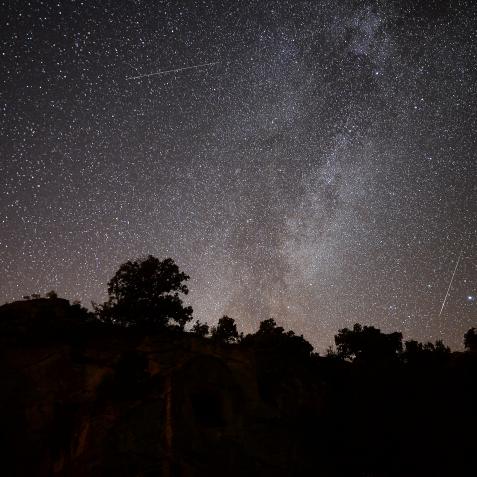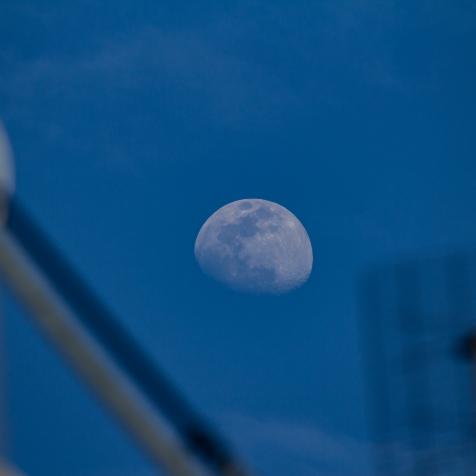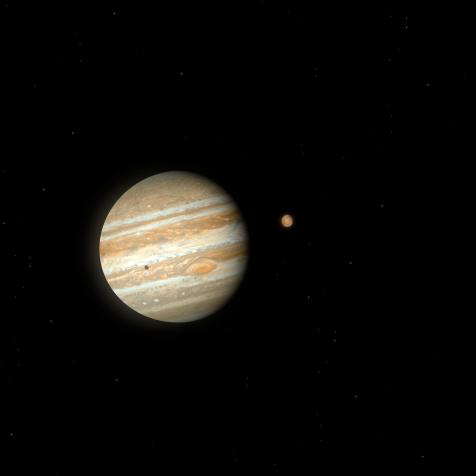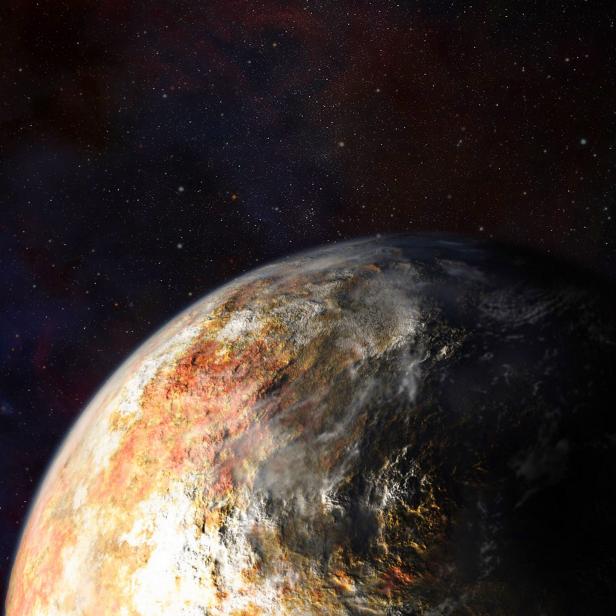
The Secret of Pluto’s Ocean

When we think of an ocean, we don't necessarily think of Pluto. If we can’t see the liquid water, why do astronomers think it’s there?
When we think of water on a planet, our minds go to certain images: waves lapping at a sandy beach, a thundering waterfall, and meandering brook. You know, the familiar liquid sites here on Earth, where water is abundant on the surface.
While our home planet is indeed the only known world to host liquid water on its surface, it’s not the only place in the solar system where you can slap on a swimsuit and take a dip.
And perhaps the most unlikely place to host an ocean of liquid water? Tiny little Pluto, a world not even as big as our Moon, clinging to the frozen fringes of our solar system like an unwanted runt of the litter.
Water? On Pluto? We have pictures of Pluto thanks to the historic New Horizons flyby in 2015. We saw many wondrous and mysterious things: nitrogen ice glaciers, water ice mountains, and a thin atmosphere. But we didn’t see any water. So where is it?
Pluto’s ocean, like the rest of the liquid water in the solar system, is hidden, a secret buried under miles of rock-hard ice. But if we can’t see it, why do astronomers think it’s there?
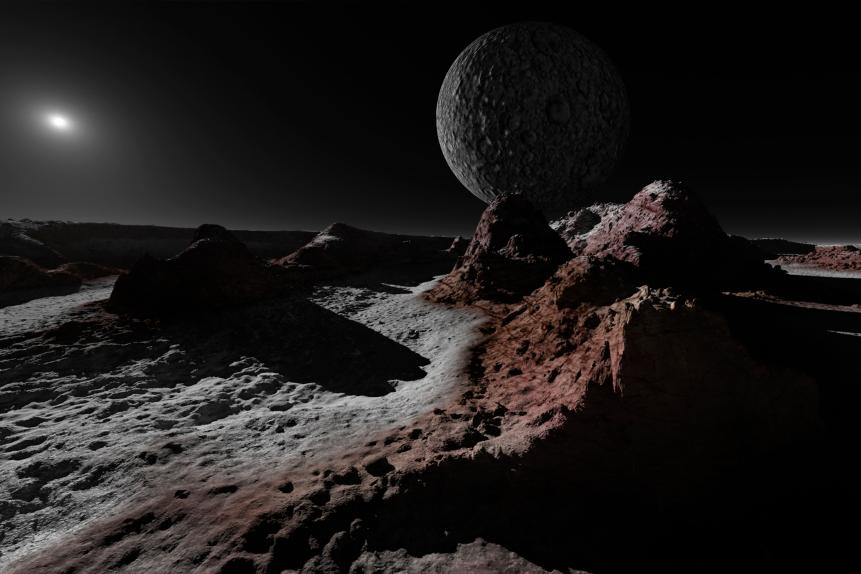
Ron Miller
For one, Pluto has a healthy fraction of radioactive elements inside of it. These elements decay over time, releasing heat. Similar elements inside the Earth generate enough heat to turn rock into magma. So out there on the edge of the solar system, it’s not a stretch to imagine the heat turning ice into water.
Second, the nitrogen glaciers. The surface of Pluto has a giant, gaping wound called the Sputnik Planitia, home to a network of slow-moving interlocking glaciers. Something is keeping those glaciers churning and the likely culprit is heat escaping the core – the same heat that might liquify water deeper down. And our best guess as to how it formed in the first place? Astronomers suspect something large smashed into Pluto long ago, causing water to gush out and seep over the surface – a lesion that never quite healed.
Lastly, there are curious features all over the face of Pluto, subtle cracks and fissures that are the telltale signs of tectonic activities. These are the same kinds of rifts and mountain chains you might find on the Earth. In the outer solar system, usually gravitational interactions are responsible for such shifts in a crust, but Pluto has nothing big enough nearby to cause that kind of stress.
But if it had a liquid water ocean that was slowly cooling – but not yet completely frozen – the expansion of that water as it turned to ice would pop and crack the crust, causing the features that we see.
It’s not a slam-dunk case. We’re not as confident about water inside Pluto as we are on, say, Europa or Enceladus. But it’s an intriguing set of clues that point to an ocean completely encircling the little world to a depth of over a hundred miles. In other words, more liquid water than the Earth has.
So on the next mission to Pluto, you better pack the scuba gear.
#TeamPluto premieres Tuesday, February 18th at 11pm ET/PT on Discovery and Discovery Go.














